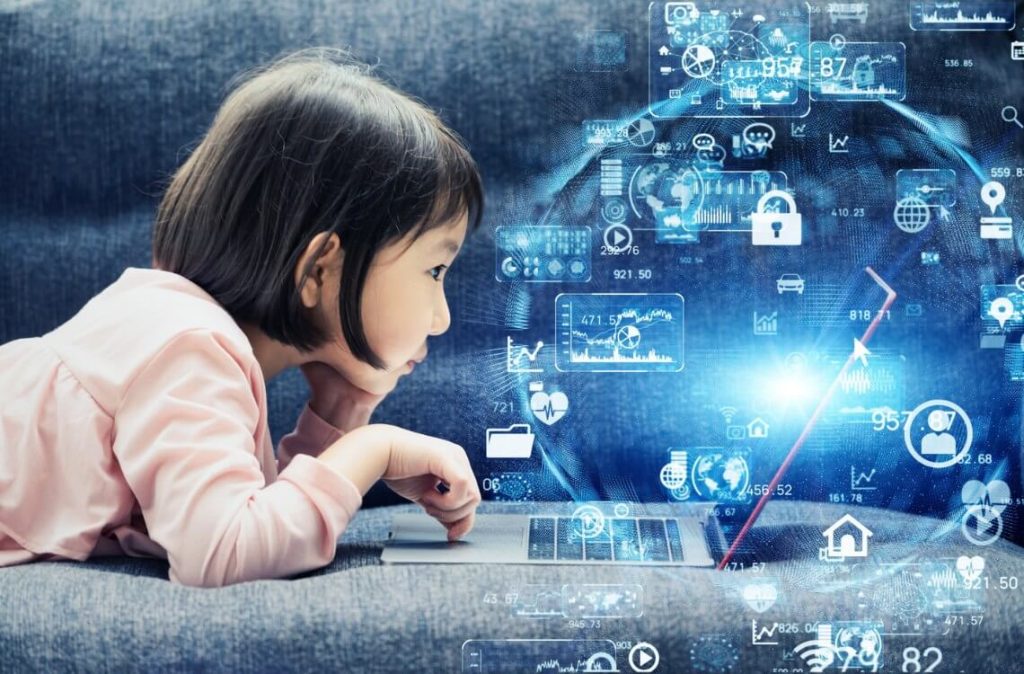Personalised learning supported by technology, gamification, and the collaboration of teachers and technology is shaping the future of digital education.
COVID-19 is Challenging Education on a Global Scale
The COVID-19 pandemic is posing a significant challenge to education systems, parents, and students worldwide. While most preschool, primary, and secondary education was done face-to-face prior to the pandemic, many education centres around the world have switched to online classes in just one month.
According to UNICEF1, during a pandemic, most centres opted for digital instruction on virtual platforms—this approach is used by 74-77% of countries on average for primary and upper secondary education. However, several alternative methods have been developed, such as curriculum broadcasting, formal self-study, and online support services for parents and students2. At the same time, nearly 30% of children worldwide do not have access to distance learning due to a lack of equipment, a lack of internet access, or living conditions. To ensure the right to education, the acceleration of digital transformation has been named as one of UNESCO’s global goals3.
In a different light, prior to the phenomenon, the rapidly growing Educational Technology sector demonstrated that these digital transformation solutions already existed—platforms with distance learning programmes, live learning experiences, AR & VR technology, and instructors with sustainable digital capabilities.
The Educational Technology sector, on par with general education, is also responding to the challenges facing the global community today—by developing methods to make e-learning more accessible, personalised and effective as well as helping decision-makers in responding to global crises.
E-learning Trends That Have Shaped Our Children’s Post-COVID Education Model
1. Technology-supported personalised learning defines the learning path of each student
‘There is a growing foundation of strong evidence of how technology-supported personalised learning can improve learning outcomes,’ said4 Educational Technology experts Gill A. Francis and Louis Major. They conducted research in 12 countries around the world and discovered that personalisation is the key to ‘teaching at the right level’.
In a classroom, Children’s knowledge levels are frequently of various types, and the adaptive nature of educational technology solves this problem. Scientists recognise that ‘personalised’ does not imply ‘individually dedicated’—with the assistance of data-driven methods and performance analysis, the Educational Technology platform can personalise a programme for a single student or a group of 50 students.
When schools were forced to close, curriculum flexibility became extremely crucial as students suddenly realised that they were in a different learning environment, which was awkward for the majority of them.
Technology-supported personalised learning based on a data-driven approach is adopted at Novakid, an online ESL (English as a Second Language) platform for children ages 4-12. Data analysis for each specific lesson aids in identifying each student’s strengths and weaknesses. In addition to data analysis, the curriculum was modified based on the identified learning needs of the children.
‘With this approach, different children require a different number of sessions to complete the same course.’ As a result, we were confident that the child had truly mastered the material. Furthermore, personalised learning helps customise classroom content: ‘based on the teacher’s assessment of specific language skills, children are automatically offered additional training and lessons’, said Max Azarov, CEO of Novakid.
2. Gamification Enhances Student Involvement
Game mechanics have been shown to motivate, enhance learning, and assist children in learning more effectively. This opinion is shared5 by one of the world’s leading gamification experts, Gabe Zikhermann—according to his research, the use of game mechanics increases mastery of new skills by 40% as a result of the neurotransmitter dopamine produced during games.
Gamification had long emerged as a trend in Educational Technology before the COVID-19 epidemic struck. However, in a pandemic context, when quarantine measures combined school and home spaces as a whole, as well as learning and entertainment, education had to compete directly with YouTube, Netflix, Minecraft, and TikTok to attract attention in the same environment.
‘Gamification is undeniably one of today’s EdTech trends. Children who have spent their entire lives surrounded by technology have different perceptions of educational content. Making learning a game is one of the best ways to make e-learning exciting for digital natives’, Novakid CEO Max shared his opinion.
3. Teachers and Tutors Will Always be Present (and Will Not Be on Vacation) with Digital Learning
So far, no technology can replace teachers. In fact, technology enhances teachers’ roles—from knowledge delivery to collective knowledge creation.
‘Of all the fast-growing segments of Educational Technology, children’s learning will remain, perhaps as the only segment that has not yet been fully replaced by digital programmes and services—this necessitates the abolition of the critical role of a teacher’, Azarov said.
There is still no digital native among teachers. As a result, the issue of their digital competence has become one of the most important items on the post-COVID-19 education agenda.
‘I presume that the next few years will be determined by how much we are willing to invest in educators and all of the extra support in schools that are important to enabling learning. These are the people who will produce future leaders for the country’, said6 Adriana Umaa-Taylor, Professor of Education at Harvard Graduate School of Education.
For more information, visit Novakid’s official website: www.novakid.my.
References:
- UNICEF: Covid-19: Are children able to continue learning during school closures?
- Andreas Schleicher: The Impact of COVID-19 on Education Insights from Education at a Glance 2020
- UNESCO: One year into COVID: prioritizing education recovery to avoid a generational catastrophe
- Louis Major and Gill A. Francis: Rapid Evidence Review: Technology-supported personalised learning
- Gabe Zichermann: Gamification in Education. What Works, Why and How
- Harvard Graduate School of Education: What the Future of Education Looks Like from Here
This article is provided by the Novakid ESL platform.
For more insightful stories and fun recipes, stay tuned to Motherhood Story!
